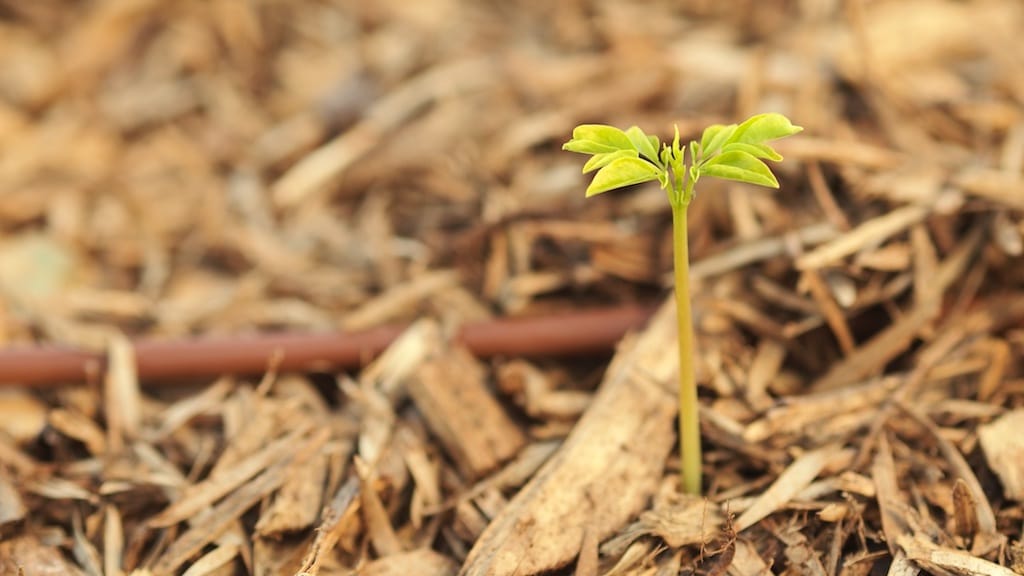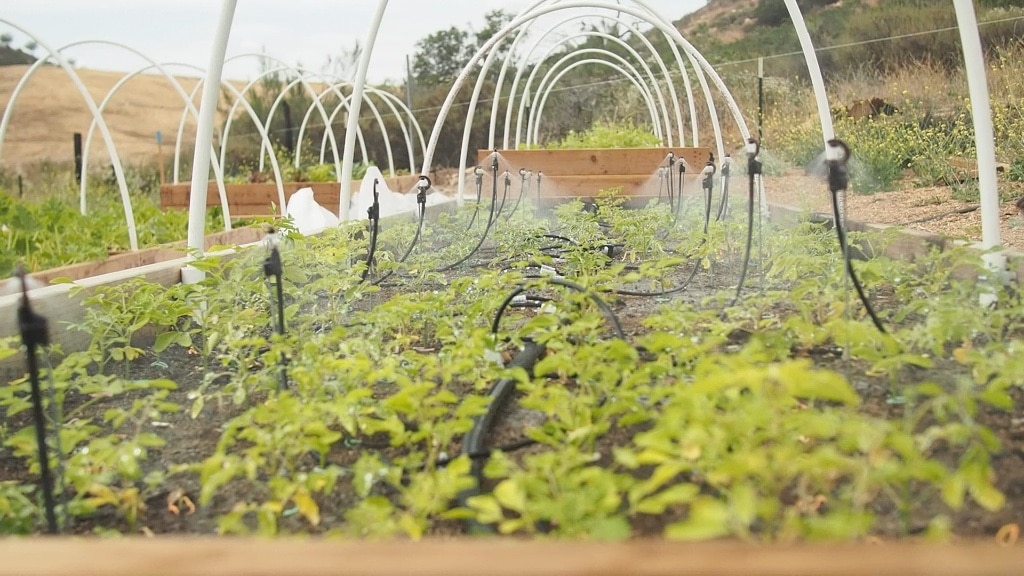Page is being regularly updated. Please check back often as more detailed instructions are added.

Instructions for Growing Moringa Trees
Not sure how to get started growing Moringa trees? You have come to right place! You will find information on:
- Climate requirements
- Soil requirements
- Four methods to propagate Moringa
- Recommended plant spacing
- Pruning strategies to favor leaf or seed pod production
- Dealing with pests and more!
Climate Requirements:
Moringa oleifera is a fast growing multipurpose tree that is grown throughout the tropics and sub-tropics. It grows very well in both the humid and arid tropics. Moringa is drought resistant but can handle a wide range of rainfall from 250 – 4000 mm (10 – 160 in). Moringa prefers to be grown at an altitude of less than 2000 ft (600 m) but can survive at 4900 ft (1200 m) in the tropics. The tree is sun and heat loving, and optimum leaf and seed pod production occurs when the average daily temperature is between 77 – 86 F (25-30 C).
Soil Requirements
Moringa is quite a tolerant tree when it comes to soil type and pH. Moringa grows in soil types ranging from clay to sand. Moringa, however, will not survive for more than a few days, if that, in water logged soil as it is very susceptible to root rot. This generally makes clay a poor soil choice unless irrigation can be completely controlled. A well-drained sandy-loam to loam is the preferred soil choice. Moringa will tolerate a very wide pH range of 5.0 – 9.0 but prefers a pH of 6.5 – 7.5.
To learn more about root rot and how to prevent it, refer to this blog post Moringa Root Rot and How to Avoid it.
[table id=3 /]
Four Methods to Propagate Moringa
While technically, Moringa is propagated either through seeds or cuttings, with seedlings and root stock available commercially, there are four ways listed to propagate Moringa. Depending on the length of your growing season and your goals, some methods of propagation may work better for you than others.
Coming Soon: Click on an Icon below for detailed planting instructions.
[ezcol_1quarter]
Growing Moringa from Seed

[/ezcol_1quarter] [ezcol_1quarter]
Growing Moringa from Seedling

[/ezcol_1quarter] [ezcol_1quarter]
Growing Moringa from Root Stock

[/ezcol_1quarter] [ezcol_1quarter_end]
Growing Moringa from Cuttings

[/ezcol_1quarter_end]
For those with a shorter growing season or for those trying to get as much of a head start on growing Moringa as possible, root stock is the best choice. It is simply the fastest way to obtain an established, mature Moringa tree. Established trees are cut down, the roots harvested, and then replanted with no danger to the root as long as the root isn’t exposed to freezing temperatures. To see root stock being harvested, refer to: Moringa Oleifera Roots Are Amazing! Harvest and Replant Moringa.
Recommended Planting Spacing
Moringa plant spacing for leaf production:
For leaf production, there are two strategies for plant spacing: traditional and intensive.
Traditional spacing:
Traditional spacing for leaf production is 2.5 ft (0.75 m) within rows and 3 ft (1 m) between rows. Under normal conditions, with this spacing, irrigation isn ‘t required after the trees are established. If your annual rainfall, however, is close to the minimum required, the Moringa trees will benefit from supplemental irrigation. They may not grow any taller with the supplemental irrigation, but they will have a denser canopy and vastly increased leaf production.
Intensive spacing:
When grown intensively Moringa is planted on a 4 in x 4 in (10 cm x 10 cm) grid. Generally intensive cultivations of Moringa are grown in beds that have been prepared by digging to a depth of 1.5 – 2 ft and mixing large amounts of compost or even fresh manure if compost isn’t available. Intensive cultivations provide the highest leaf production per unit area, not per tree. When planted intensively, pest control can
become a larger concern. Also irrigating is often required as well as regular application of fertilizer. Using composted chicken manure has proven to provide the highest leaf yield for Moringa trees.
A second method of intensive cultivation is to plant on a larger 12 in x 12 in grid, but plant multiple seeds together so that each planting site has 3-4 trees.
Moringa plant spacing for seed pod production:
For seed pod production, the recommended spacing is 2.5 m x 2.5 m (8.2 ft x 8.2 ft)
Pruning Strategies for Moringa
Moringa is a single stemmed tree that will grow quite tall and slender if left untouched. It is normal for the tree to grow over 12 ft (3.6 m) in a single season. In order to encourage branching, leaf production and seed pod production pruning is recommended.
Moringa pruning strategies for leaf production
For leaf production there are many different strategies people use for pruning. We will cover two strategies that we feel are the most productive.
Pruning strategy for traditional plant spacing:
For Moringa trees that are planted with traditional spacing, after the tree reaches 3.3 ft (1 m) cut off new growth form the main stem. Cutting off this new growth will keep the main stem from growing taller that 3.3 ft (1 m) and will encourage side branching.
Over time the same technique can be used to limit the height of the side branching and promote increased branching yet again.
Pruning strategy for intensive plant spacing:
For Moringa trees that are planted in an intensive cultivation cut the trees back to a height of 8 – 16 in (0.2 – 0.4 m) from the ground each time the trees reach a height of 3 – 4 ft (0.9 – 1.2 m). Using this method will allow for multiple harvest per year in the tropics, about 3 harvest per year in a climate like Southern California and at least 1 harvest in the colder states. Shown on the right is a Moringa tree which was but down one time prior to this photo.
Moringa pruning strategies for seed pod production
For seed pod production after the tree reaches 3.3 ft (1.0 m), cut off new growth from the main stem. Cutting off this new growth will keep the main stem from growing taller that 3.3 ft (1.0 m) and will encourage side branching. Also remove the bottom most branches and new growth so that new and existing branching comes from near the top of the main stem. As the new branches grow upward, repeat the process of removing new growth on these branches when they reach a height of 4 – 5 ft (1.2 – 1.5 m).
This pruning strategy coupled with the increased spacing of the trees will maximize the seed pod production.
Dealing with Pests
Moringa trees generally don’t have issues with pests or diseases. However, mites, aphides, and the bagrada bug will certainly attack Moringa. Since Moringa grows so fast, it often will survive an attack, even as a small seedling, by virtue of growing faster than what the pests are able to destroy. Serious setbacks can occor if the pests are not dealt with though. Certified organic products such as this Neem oil or this more concentrated form of the active ingredient in Neem oil, Azadirachtin
, are highly effective against the pests mentioned above. It is typically recommended that these products be used once per week for 3 consecutive weeks. In case you don’t have a sprayer, I have used both this backpack sprayer
and a simple hand held sprayer. Both offer great value and have worked well!

